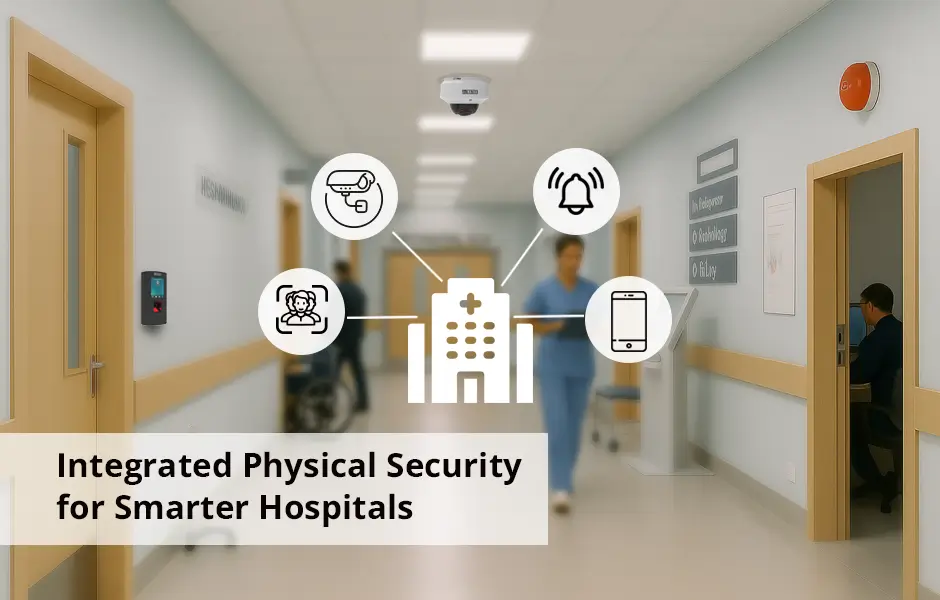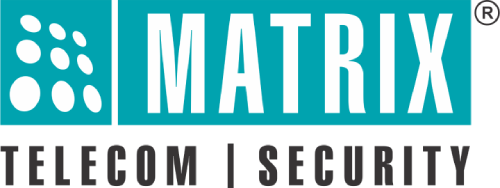
Hospitals have no peaceful nights, most of the time! During one such night, there was a chilling alert from the maternity ward: an infant’s ankle tag had triggered an unauthorized exit alarm. Immediately, the hospital’s integrated security system – unseen guardian – sprang to life. Doors around the nursery automatically locked down, surveillance cameras swiveled to cover every exit, and a live video feed, along with an alert, reached security personnel’s mobile devices – all in a flash. This wasn’t a drill; it was a real moment showing how the hospital security had moved from old, separate security steps to a full, connected system. This smart network, much more than just guards and cameras, is built to actively keep patients, staff, and hospital property safe while also making daily tasks run smoother.
Hospitals face a unique array of security challenges. The threats are diverse and demand intelligent solutions, from the risk of infant abduction and the elopement of vulnerable patients to workplace violence against healthcare professionals and the diversion of controlled substances. Data from the Occupational Safety and Health Administration (OSHA) reveals that from 2002 to 2013, incidents of serious workplace violence (requiring days off for recovery) were, on average, more than four times more common in healthcare than in private industry. This stark statistic underscores the urgent need for effective security measures.
The Power of Integrated Physical Security
An integrated security system is a holistic approach where various security components – such as surveillance cameras (CCTV), access control systems, alarms, infant protection systems, and communication tools – are networked together. For example, if a silent alarm is triggered in the pharmacy, an integrated system can automatically lock down nearby exits via the door access control system, focus relevant surveillance cameras on the area, and send an alert with live video to security personnel’s mobile devices – all within seconds.
Silent Guardians of Patient Safety
Integrated security systems contribute significantly to patient well-being in several crucial ways:
- Enhanced Patient Monitoring and Fall Prevention: High-definition surveillance cameras, when integrated with intelligent analytics, can monitor high-risk patients for falls or unusual activity, alerting staff instantly. A study published in The Joint Commission Journal on Quality and Patient Safety on a video monitoring program in a medical-surgical unit reported a 35% reduction in patient falls.
- Robust Access Control for Sensitive Areas: Door access control systems are fundamental in preventing unauthorized entry to critical zones like pharmacies, neonatal intensive care units (NICUs), operating rooms, and medical records storage. With reports suggesting that nearly 10% of practitioners may divert drugs, robust door access control systems act as a critical deterrent. A major New York-based hospital implemented access controls across its medication rooms and reported a 45% reduction in internal theft over one year.
- Specialized Infant Protection: Infant tagging systems (RFID) linked with door access control systems and surveillance cameras are a prime example. If an infant with a tag is moved towards an unauthorized exit, an alarm is triggered, specific doors may automatically lock, and security personnel are immediately notified with live video. Individual hospitals implementing such systems consistently report near-elimination of abduction risks from these protected units.
- Wander Management for At-Risk Patients: Patients with dementia or Alzheimer’s benefit from wearable RFID tags integrated with the security system. If a patient wearing a wander management tag approaches a designated perimeter, an alert is sent to nursing staff mobile devices showing the patient’s name and current location via an integrated map. One facility reported a 60% reduction in elopement incidents among at-risk patients after implementing an integrated wander management system.
- Deterring and Managing Workplace Violence: Visible surveillance cameras and easily accessible panic buttons are key. The International Association for Healthcare Security & Safety (IAHSS) Foundation’s “Healthcare Crime Survey” indicates that hospitals with comprehensive security programs, including visible surveillance and rapid response systems, often report lower incidents of assault.
When Hospital Security is Streamlined
Beyond patients’ safety, integration brings significant operational advantages as well:
- Streamlined Security Operations and Faster Response: A centralized platform reduces complexity. Hospitals using integrated command centers saw a 25% reduction in security manpower requirements and a 15% improvement in response times.
- Efficient Asset Tracking and Management: Integrating Real-Time Location Systems (RTLS) with the hospital security network helps locate mobile medical equipment. Studies have shown nurses can spend anywhere from 30 minutes to over an hour per shift searching for equipment. Implementations of RTLS have demonstrated the potential to reduce equipment search times by as much as 85% in some hospitals.
- Automated Visitor and Contractor Management: Integration with self-service kiosks and ID badge printing ensures a streamlined visitor experience while maintaining strict security. According to a 2024 article from ResearchGate, in India, a pilot test of an electronic visitor management system in a Bengaluru hospital successfully demonstrated its effectiveness in saving staff time and improving patient safety by limiting the number of visitor footfalls at the hospital per day.
- Emergency Lockdowns and Evacuation Automation: In emergencies like active shooter scenarios or fires, integrated systems can initiate hospital-wide lockdowns or phased evacuations using pre-set workflows. St. John’s Health in Wyoming automated their response protocols using integrated alarms and door access control systems, reducing emergency clearing times by 40%.
- Enhanced Data Management for Compliance and Investigations: Integrated security systems log all events. For a HIPAA audit, an administrator can quickly generate a report of everyone who accessed the medical records room in the last 90 days, complete with timestamps.
- Reduced False Alarms: Advanced video analytics can differentiate between genuine threats and minor disturbances. A hospital that upgraded its perimeter surveillance cameras with AI-powered analytics reported a 70% reduction in false alarms caused by weather or animals.
Shaping Tomorrow’s Healthcare Security
Integrated security systems fundamentally enhance safety and enable swift, efficient staff reactions, ensuring a safer and more efficient healthcare environment. These solutions, encompassing centralized monitoring of vast camera networks, automated attendance tracking, efficient call management, and real-time alerts for critical events, are pivotal for modern healthcare facilities. To truly optimize operations and elevate patient care in an increasingly complex world, exploring advanced security solutions becomes essential. For organizations seeking these comprehensive capabilities, Matrix offers the expertise and technology required to navigate the complexities of modern healthcare security, effectively and confidently.
Contact our experts to guide you through the best-fit solution tailored to your requirements.

